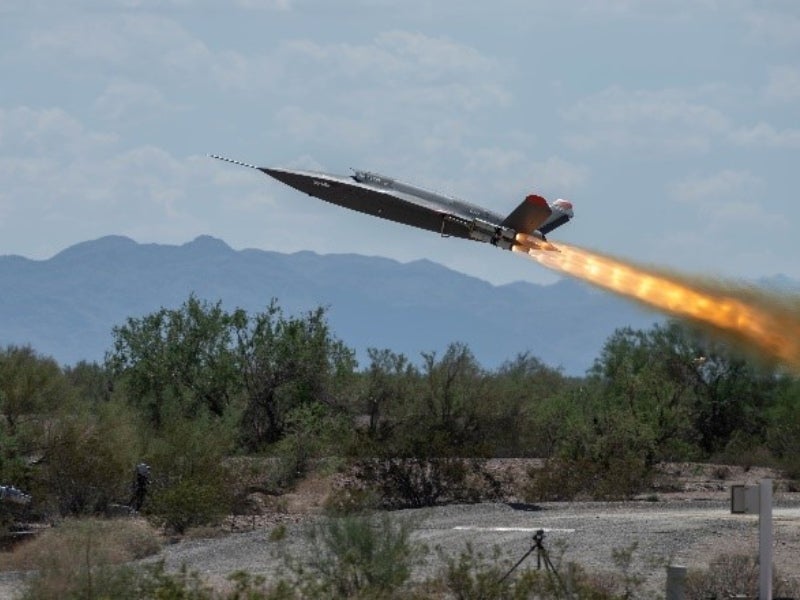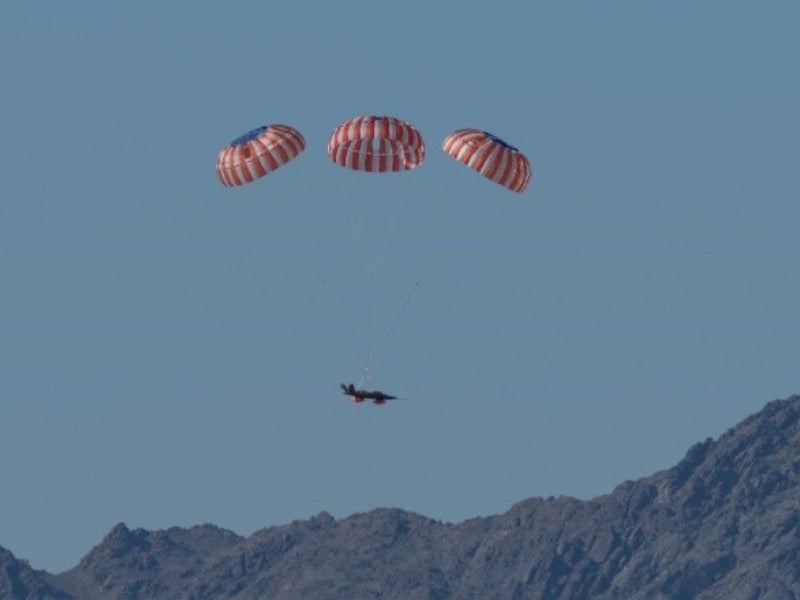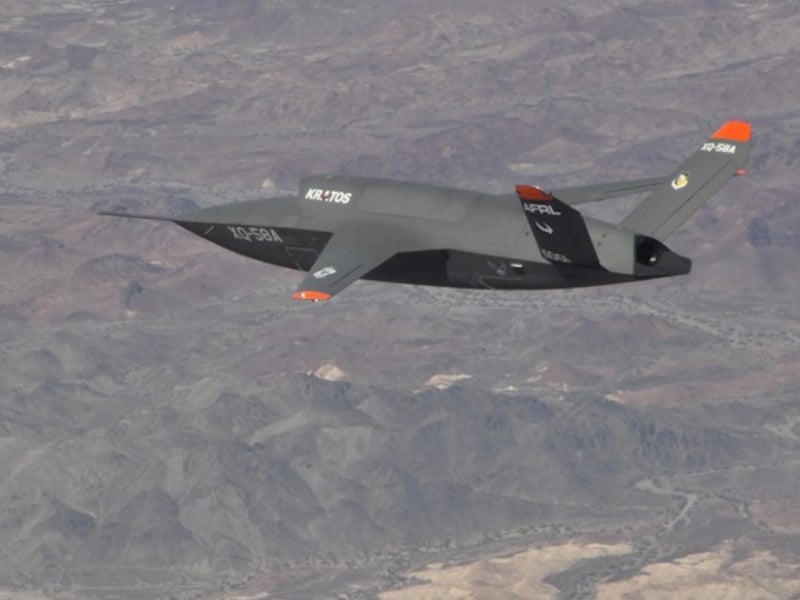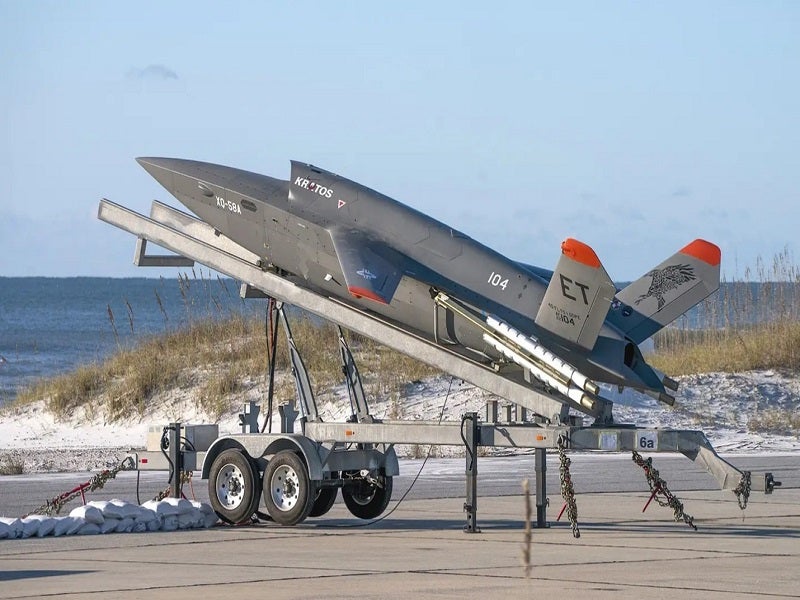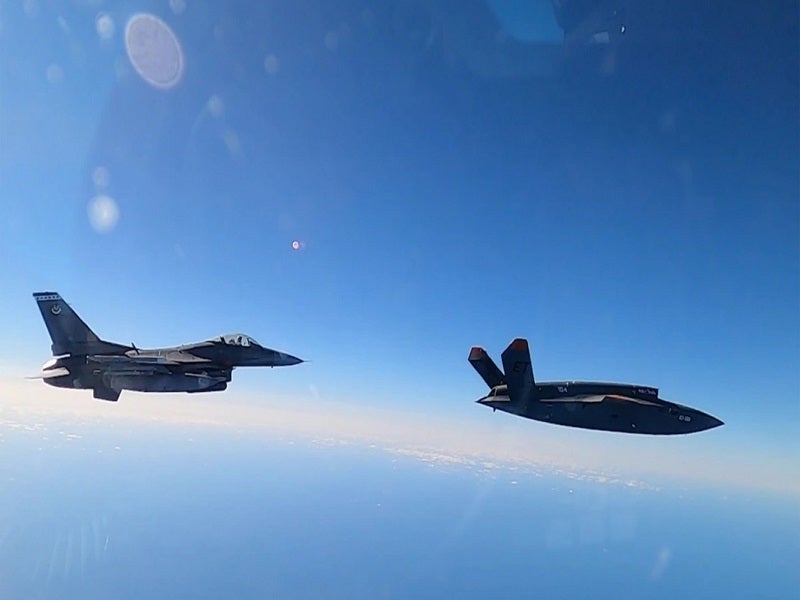XQ-58A Valkyrie is a high subsonic, long-range strike unmanned aerial vehicle (UAV) being developed by Kratos Defense & Security Solutions in collaboration with the Air Force Research Laboratory (AFRL).
The low-cost unmanned combat aerial vehicle is designed for deployment in surveillance, reconnaissance and long-range combat missions to deliver maximum operational flexibility and utility to the warfighter. It is intended to serve as an unmanned escort or wingman aircraft to a manned fighter aircraft in warfare.
XQ-58A Valkyrie development and testing
The state-of-the-art UAV is being developed under the low-cost attritable strike demonstrator (LCASD) programme of the AFRL’s low-cost attritable aircraft technology (LCAAT) project. The programme aims to rapidly design and manufacture unmanned aerial systems (UAS) by developing superior design tools and employing commercial manufacturing processes to cut down production time and costs.
Kratos was awarded a $40.8m cost-share contract by the AFRL to develop a low-cost attritable strike UAV design in July 2016. The company is responsible for designing, developing and testing a high-speed, long-range and low-cost UAS under the contract.
The flight test programme of the XQ-58A UAV includes a series of planned test flights in two phases. It is intended to evaluate system functionality, aerodynamic performance, and launch and recovery systems.
The demonstrator aircraft completed its maiden flight at Yuma Proving Grounds in March 2019. The second flight test was conducted in June 2019.
In October 2019, the XQ-58A Valkyrie crash-landed at Yuma Proving Ground after a 90-minute flight during its third test flight. High surface winds and failure of the provisional flight test recovery system were identified as the primary causes of the accident.
The fourth flight test of the XQ-58A Valkyrie was completed in January 2020. The UAV demonstrated its ability to fly at higher altitudes during the 60-minute flight. It landed safely using its parachutes, ratifying the design changes made for the airbag system after the third test flight.
The Valkyrie UAV accumulated more than five flight hours and surpassed the originally scheduled objectives for the flight test programme, as of January 2020.
XQ-58A Valkyrie’s fifth flight test took place in December 2020. The test was conducted at Yuma Proving Ground in Arizona where it was flown in a formation together with F-22 and F-35 fifth-generation fighters.
The sixth test was conducted by Kratos, AFRL, and Area-I in March 2021. The test saw the first release of payload from the UAV’s internal weapons bay. The ALTIUS-600 small, unmanned aircraft system (SUAS), which was developed by Area-I, was successfully released from the payload bay doors during the flight test. Furthermore, the XQ-58A flew higher and faster compared to its previous flights.
A series of flight tests were conducted with two XQ-58A aircrafts for the Skyborg programme, a USAF effort to develop an artificial intelligence (AI) driven system that will enable unmanned combat aerial vehicles to fly in tandem with manned fighter aircraft, in July 2022.
A flight test of the XQ-58A aircraft was successfully conducted for the Block 2 Valkyrie Maturation programme in November 2022.
The flight test of the Block 2 aircraft provided significant results as the UAS flew longer and higher with heavier mission weight and at a longer range than previous demonstrations. The test demonstrated encrypted communications with redundant communications packages. It also proved the aircraft’s autonomous capability to navigate to the landing site in a loss of communications scenario.
Design and features of XQ-58A
The XQ-58A Valkyrie features a clean-sheet design. Its trapezoidal fuselage integrates swept-back main wings, V-shaped tail and an air intake above the fuselage. The stealthy design makes the UAV a difficult target to detect and track.
The long-range strike aircraft incorporates commercial-off-the-shelf (COTS) components. It employs manual or pre-programmed flight control systems, ensuring high manoeuvrability during missions.
The UAV has a length of 9.14m and a wingspan of 8.2m. The dry weight of the aircraft is 1,134kg, while its maximum take-off weight (MTOW) is 2,722kg.
The XQ-58A Valkyrie can carry a maximum payload of 544kg. The open mission system architecture allows it to integrate customer-specific payloads according to the mission requirements.
Weapon systems of XQ-58A Valkyrie
The internal weapons bay can hold and deliver at least two GBU-39 small diameter bombs, while the combat UAV can also carry lethal weapons on its wing stations.
XQ-58A engine and performance
The XQ-58A Valkyrie is powered by a turbofan engine capable of developing a maximum thrust of approximately 2,000lb. The UAV requires no runway facilities to take-off and landing as it uses rocket-assisted launch and parachute recovery systems. Its compact dimensions and small logistical footprint further enable operations from remote and confined locations.
The unmanned combat aerial vehicle can fly at a cruise speed of Mach 0.72. It can operate at altitudes ranging between 50ft and 45,000ft, and attain a maximum range of 5,556km (3,000nm).
Orders and deliveries
Kratos Unmanned Aerial Systems received a $15.5m contract from the US Naval Air Warfare Aircraft Division in December 2022 to provide two XQ-58As integrated with sensor and weapon system payloads for the penetrating affordable autonomous collaborative killer mission.
The contractual scope also includes engineering, integration, installation, testing, ground and flight operations, logistics, and maintenance services for the UAS. The company is also responsible for operating the UAS for flight test and demonstration events.
Kratos was awarded a contract worth $37.7m by the Air Force Life Cycle Management Center’s Fighters and Advanced Aircraft Directorate (AFLCMC/WA) Advanced Aircraft Program Executive Office to integrate, test and deliver XQ-58A aircraft under the Skyborg programme, in December 2020.
The contract includes design, integration and flight testing phases of the aircraft along with the integration of several customer-defined mission payloads and autonomy in coordination with Leidos, which is acting as the system design agent for Skyborg.
The AFRL awarded a contract worth $17.7m to Kratos in the same month to support the LCAAT efforts.
The company received contract options worth up to $13.2m from the Fighters and Advanced Aircraft program executive office to continue work on XQ-58A for the Skyborg programme in August 2021.
The funding under the contract options was provided to advance the integration of the Leidos-built Autonomous Core System (ACS) into the UAS and to support operational experimentation.

